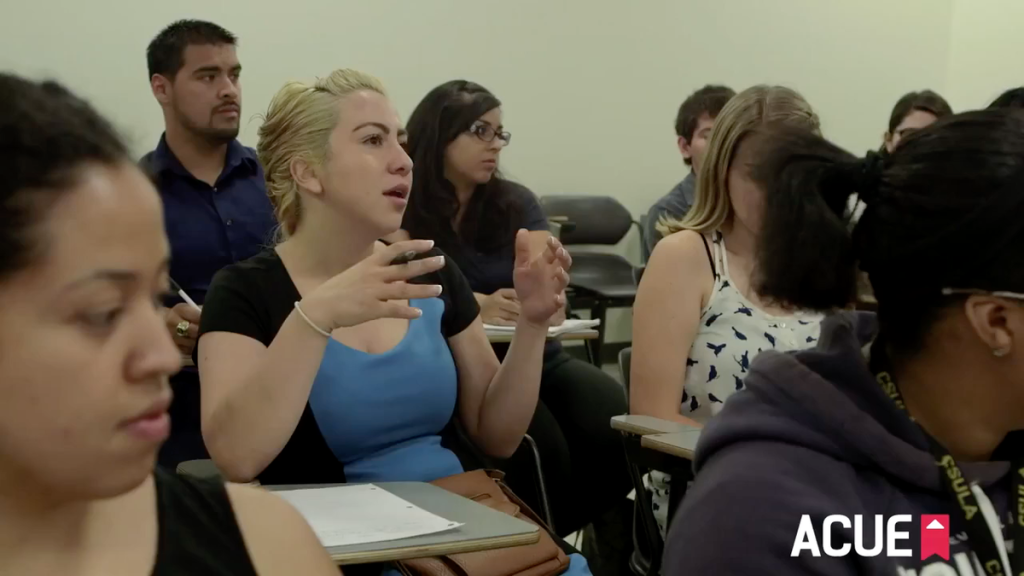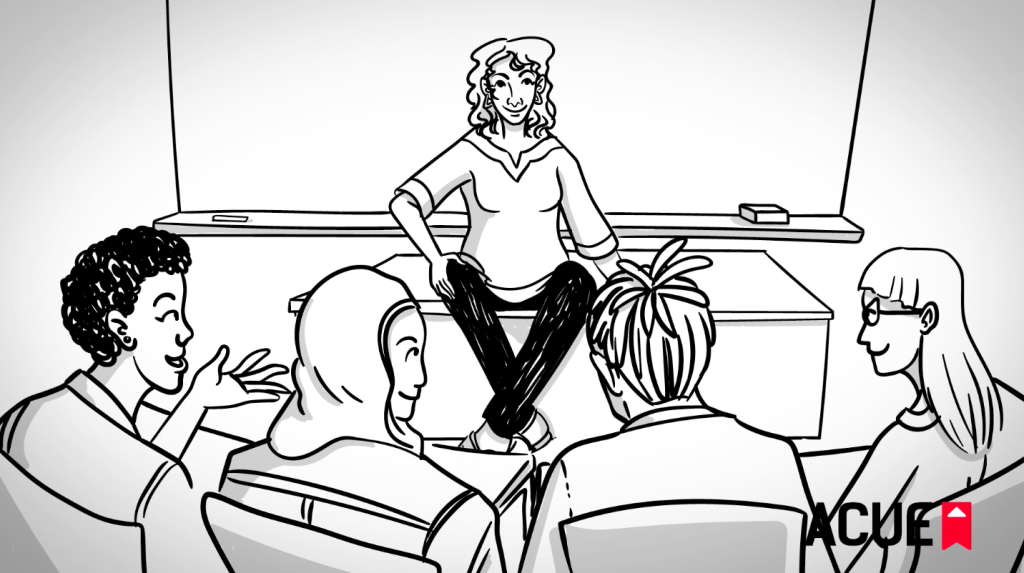
News Roundup: Encouraging Class Participation and Pedagogy with Podcasts
This week, strategies for encouraging class participation from all students, and a professor tasks her students with creating their own podcasts.
| Sign up for The ‘Q’ Newsletter for the latest news and insights about higher education teaching and learning. |
Brenda Gunderson on Active Learning in Large Classes
Brenda Gunderson, an award-winning lecturer featured in ACUE’s Course in Effective Teaching Practices, shares the origins of her famed cartwheels and discusses other active learning strategies to use in large classes. (The Q Blog)
Students Who Don’t Participate in Class Aren’t All Introverts
Todd Zakrajsek illuminates the different motivations students have for shying away from active engagement in class discussions and suggests strategies for encouraging participation. (The Scholarly Teacher)
Conserving Your Teaching Energy
Neil Baldwin lists small steps instructors can take for their well-being to ensure that they are mentally, physically, and emotionally equipped to meet the demands of teaching today’s students. (Vitae)
Building Resilience into the Classroom
Likening the journey of learning to chivalric quests from history and literature, Jessica Riddell describes how instructors can teach students to find success by building their capacity for resilience. (University Affairs)
Petitions and the Power of Poetry
As some institutions deemphasize studying poetry, an English professor and poet urges instructors to teach new kinds of poetry like that in Hamilton and to teach “old” poetry in new ways. (Inside Higher Ed)
The Podcast for African Hip Hop
Msia Kibona Clark tasks her students with creating their own podcasts as a research project for her African Hip Hop course. (Africa Is a Country)
Living in the Real World
Refuting the idea that colleges should withhold special accommodations for mental health disabilities to prepare students for the working world, Cate Denial argues that, for many students, college is the “real world,” and these accommodations allow students to successfully participate in their education. (Cate Denial)
How Does Teaching and Learning in Higher Education Feel?
Using poems written by students and teachers, Kathleen Quinlan points out that embracing positive emotions helps instructors cultivate key relationships in higher education—between students, instructors and students, and students and their environments. (The Bera Blog)
Using Wikipedia to Explore the Development of Facts
Rather than discouraging students from using Wikipedia because of possible inaccuracies, one instructor has her students edit entries, which teaches them how to research and analyze facts and demonstrates how knowledge is expanded and improved over time. (Teaching & Learning Innovations)
Gadgets and Distractions
Matt Reed considers the benefits and challenges of student use of technical gadgets in the classroom. (Confessions of a Community College Dean)
Five Ways to Improve Leadership in Universities
Strategies for strengthening leadership in higher education include creating development opportunities and promoting diversity. (The Guardian)





